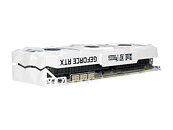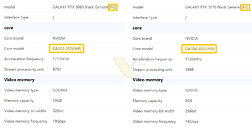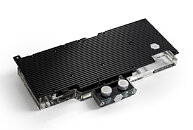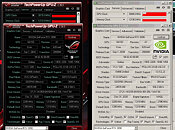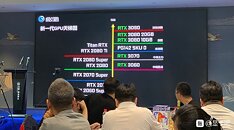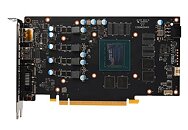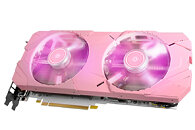
GALAX GeForce RTX 3090 Ti HOF OCLab Edition PCB Pictured
Here are some of the first pictures of the drool-worthy GALAX GeForce RTX 3090 Ti Hall of Fame (HOF) OCLab Edition graphics card, courtesy of Duck OC. This is the first production graphics card to feature two ATX 3.0 16-pin power connectors, each capable of delivering 600 W of power. The card's power limit out of the box is reportedly as high as 516 W, and as we've discussed in an older article, the decision to go with a dual 16-pin connector setup may have to do with limited availability of PSUs with 16-pin connectors, and enthusiasts relying on the NVIDIA-designed adapter that converts three 8-pin PCIe power connectors to a 16-pin, for a maximum power of "just" 450 W.
The RTX 3090 Ti HOF OCLab Edition sticks to the long tradition of GALAX HOF graphics cards with white PCBs, with plenty of overclocker-relevant features such as consolidated voltage measurement points, a decluttered component layout for volt-modding, anti-condensation surface-treatments on the PCB, dual-BIOS, and lots more. The card features a 28-phase VRM, with 24 phases for the GPU, and 4 phases for the memory. The OCLab Edition SKU in particular comes with an included full-coverage water block sourced from Bitspower. The block features nickel-plated copper as its primary material, and a clear-acrylic top that's studded with addressable-RGB LEDs. There's also an air-cooled variant of this card, but it lacks the OCLab tuning.
The RTX 3090 Ti HOF OCLab Edition sticks to the long tradition of GALAX HOF graphics cards with white PCBs, with plenty of overclocker-relevant features such as consolidated voltage measurement points, a decluttered component layout for volt-modding, anti-condensation surface-treatments on the PCB, dual-BIOS, and lots more. The card features a 28-phase VRM, with 24 phases for the GPU, and 4 phases for the memory. The OCLab Edition SKU in particular comes with an included full-coverage water block sourced from Bitspower. The block features nickel-plated copper as its primary material, and a clear-acrylic top that's studded with addressable-RGB LEDs. There's also an air-cooled variant of this card, but it lacks the OCLab tuning.
















